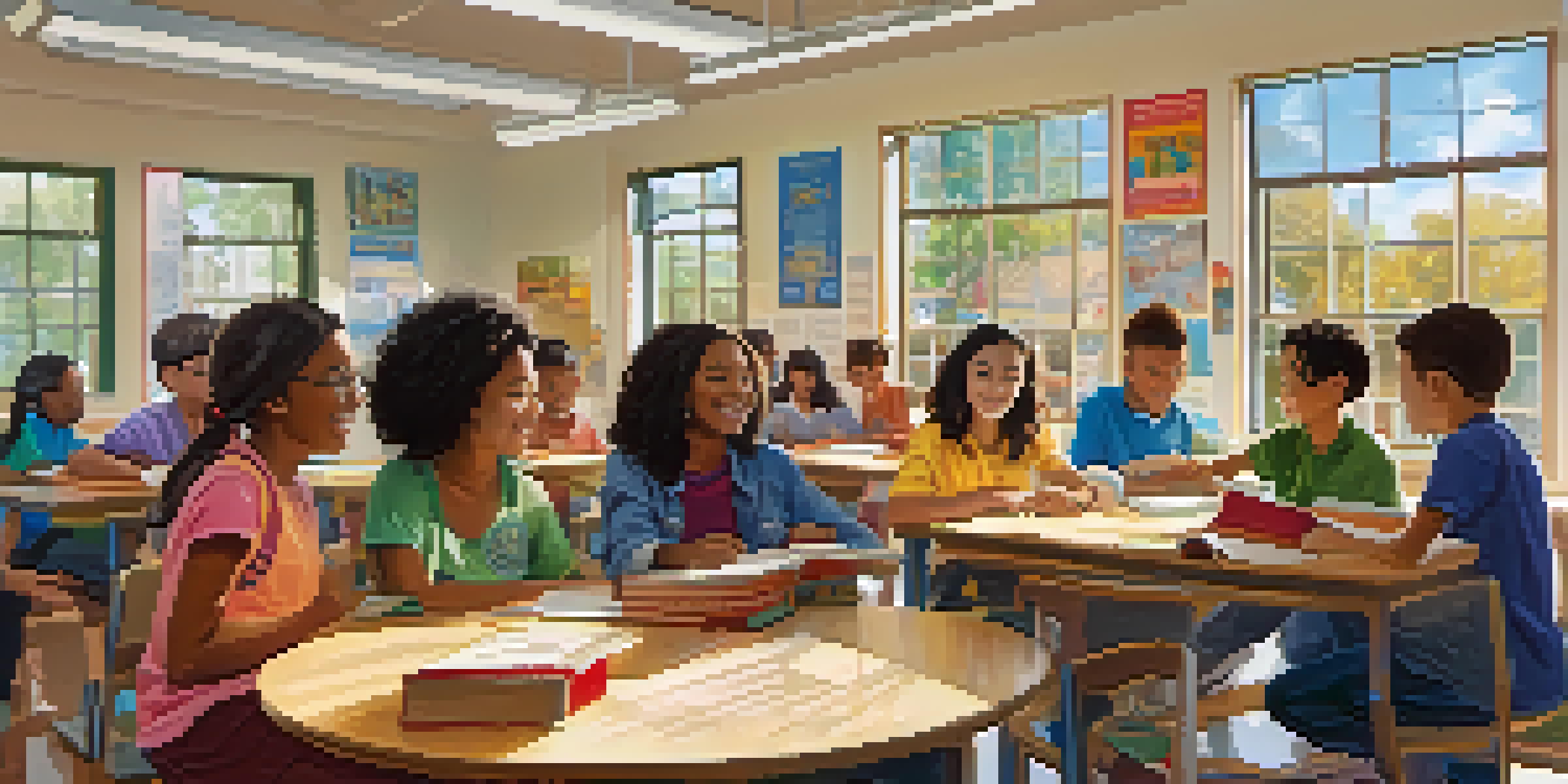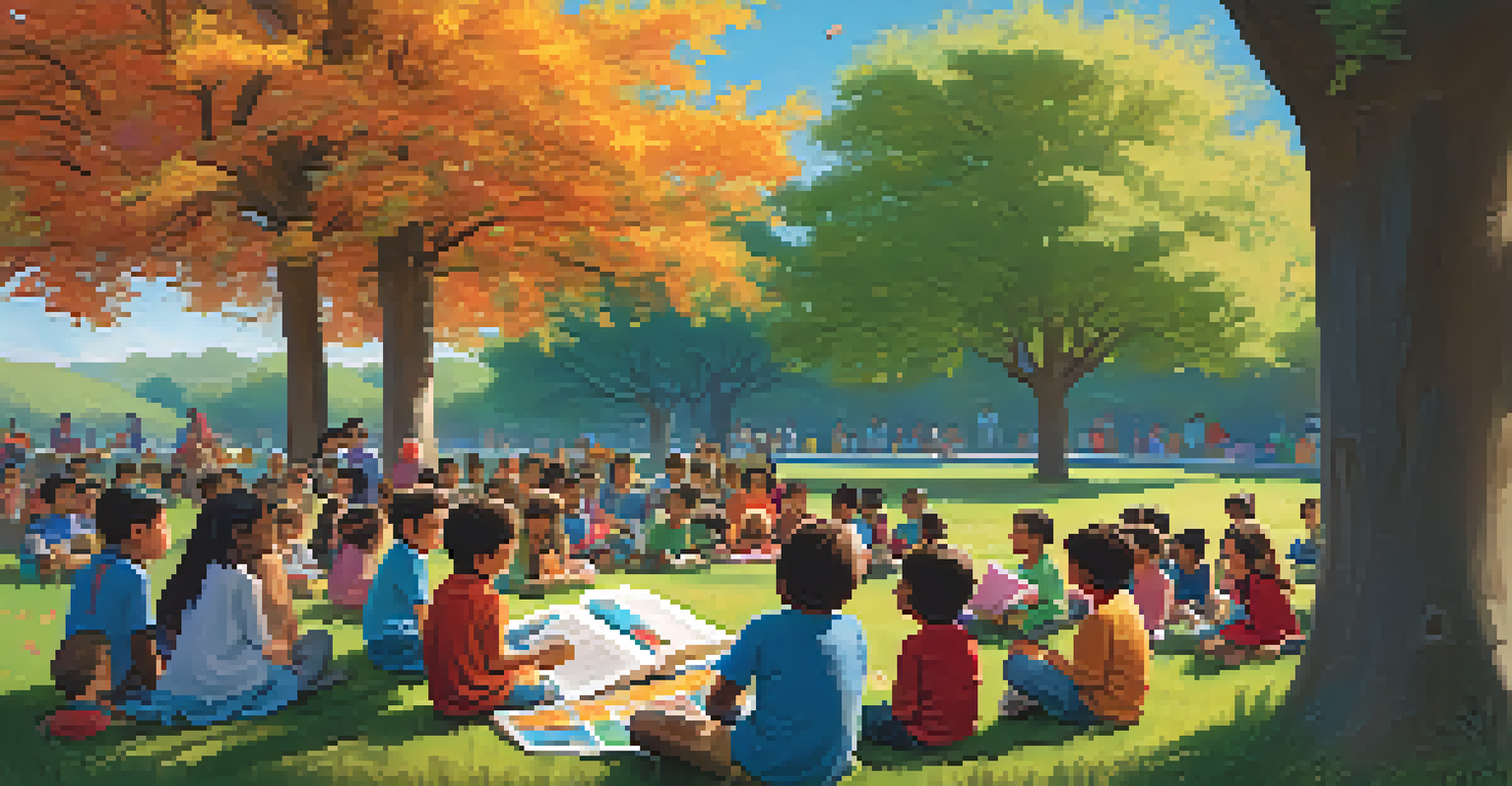Exploring Diversity Through Literature and Social Studies

Understanding Diversity: The Basics and Beyond
Diversity encompasses various dimensions, including race, ethnicity, gender, and culture. It’s about recognizing and valuing differences in people’s backgrounds and experiences. Understanding diversity is crucial as it fosters empathy and inclusivity, allowing individuals to appreciate perspectives that differ from their own.
In diversity, there is beauty and there is strength.
In literature, diverse characters and narratives reflect the richness of human experience. For example, books like 'The Hate U Give' by Angie Thomas provide insights into specific cultural and societal issues. These stories invite readers to engage in conversations about equity, justice, and the importance of representation.
Social studies complement this exploration by examining how societies function and evolve. Through historical and contemporary lenses, students learn about the impact of diversity on social structures. This understanding encourages critical thinking and promotes a more inclusive worldview.
The Role of Literature in Promoting Empathy
Literature acts as a powerful tool for building empathy by presenting readers with experiences outside their own. When we delve into the lives of characters from various backgrounds, we can better understand their struggles and triumphs. This emotional connection can ignite a desire for social change and activism.

Consider the impact of memoirs, like 'Educated' by Tara Westover, which highlight personal journeys through adversity. Such narratives allow readers to see the world through someone else’s eyes, fostering a sense of compassion. This emotional engagement is essential for bridging divides and promoting understanding.
Diversity Enriches Education
Understanding and integrating diversity in literature and social studies fosters empathy and inclusivity among students.
Moreover, discussing these literary works in classrooms encourages dialogue about difficult topics. Teachers can guide students through conversations about prejudice, privilege, and resilience, creating a safe space for exploration. This collaborative learning environment nurtures a deeper appreciation for the complexities of diversity.
Social Studies: A Framework for Understanding Cultures
Social studies provide a framework for understanding the intricacies of different cultures and societies. By studying history, geography, and economics, students gain insights into how cultural identities shape experiences. This knowledge is vital for appreciating the nuances of diverse communities.
Literature is the most agreeable way of ignoring life.
For instance, examining the cultural contributions of various ethnic groups enriches the narrative of a nation’s history. Learning about the civil rights movement or immigration patterns reveals how diversity has been a driving force in societal change. Such lessons highlight the importance of inclusivity in shaping a collective identity.
Additionally, social studies encourage students to engage critically with current events. By analyzing news articles and documentaries, students can see the real-world implications of diversity. This awareness fosters informed citizenship and empowers individuals to advocate for equity.
Integrating Diverse Literature into Curriculum
Integrating diverse literature into educational curriculums is essential for fostering an inclusive environment. Teachers can curate reading lists that reflect a variety of voices and experiences, ensuring that all students see themselves represented. This approach not only enriches discussions but also validates students' identities.
For instance, incorporating works by authors like Chimamanda Ngozi Adichie or Jason Reynolds introduces students to different cultural contexts. These texts challenge stereotypes and stimulate critical thinking about societal norms. Creating a diverse reading list encourages students to explore literature that resonates with their own experiences or broadens their perspectives.
Literature Builds Empathy
Diverse narratives in literature help readers connect emotionally with different experiences, promoting social change.
Moreover, diverse literature can serve as a springboard for interdisciplinary learning. Teachers can connect themes from literature to historical events or social issues, creating a holistic educational experience. This integration reinforces the idea that diversity is not just a topic but an integral part of our shared human experience.
The Impact of Diverse Narratives on Young Minds
Diverse narratives have a profound impact on shaping young minds and their perceptions of the world. When children encounter stories that reflect various cultures, they develop a broader understanding of humanity. These narratives encourage curiosity and open-mindedness, qualities that are essential in our global society.
For example, picture books that feature protagonists from different backgrounds can inspire children to embrace diversity from a young age. Stories like 'Last Stop on Market Street' by Matt de la Peña teach lessons about empathy, kindness, and community. These early experiences with diverse literature lay the groundwork for a more inclusive mindset.
As young readers grow, the themes of resilience and identity found in diverse literature can empower them to navigate their own challenges. Exposure to these stories fosters a sense of belonging and encourages students to celebrate their unique backgrounds. Ultimately, diverse narratives cultivate a generation that values inclusivity and understanding.
Challenges in Teaching Diversity through Literature
While the benefits of teaching diversity through literature are clear, challenges remain. One major hurdle is the accessibility of diverse texts; not all schools have the resources to provide a wide range of literature. This gap can limit students' exposure to different perspectives and hinder the development of empathy.
Additionally, some educators may feel uncertain about how to approach sensitive topics related to diversity. Fear of backlash or discomfort can lead to avoidance, preventing meaningful discussions from taking place. It’s essential for educators to receive training and support in navigating these conversations effectively.
Challenges in Teaching Diversity
Educators face obstacles like resource accessibility and discomfort in discussing diversity, which can hinder meaningful learning.
Despite these challenges, educators can be proactive by seeking professional development opportunities and collaborating with colleagues. By sharing resources and strategies, teachers can create a more inclusive curriculum that addresses diversity. Overcoming these obstacles ultimately leads to richer learning experiences for all students.
The Future of Diversity in Education
As we look to the future, the importance of diversity in education will only continue to grow. Schools are becoming increasingly multicultural, and it’s essential for curricula to reflect this diversity. By prioritizing inclusive teaching practices, educators can prepare students to thrive in a global society.
The integration of technology in education also presents new opportunities for exploring diverse voices. Digital platforms can connect students to authors, activists, and communities worldwide, expanding their understanding of different cultures. This engagement fosters a sense of global citizenship and responsibility.

Ultimately, the journey toward embracing diversity through literature and social studies is ongoing. As educators, students, and communities work together, we can create a more inclusive future. By championing diverse narratives, we pave the way for a society that values understanding, respect, and empathy.